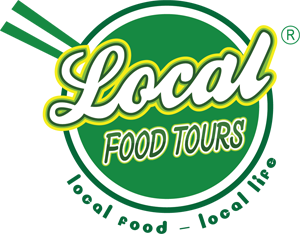Customers can enjoy Quang noodle, chicken rice or banh to, banh bot loc, banh beo, etc. in many provinces in the Central, but visitors on Vietnam food tour only enjoy cao lau in Hoi An. In the 17th century, Lord Nguyen allowed trading in Hoi An port, the Chinese, the Japanese came here to do business, trade and living. And then cao lau – specialty in Hoi An was created.

Strips of cao lau are made in a so delicate manner. Unlike pho – Hanoi traditional food, cao lau stips must be made from the pure rice of Quang Nam Province. In particular, local people do not choose the type of rice which has been kept for a long time but also not select rice which has been havested recently. Local people will choose the best kind of rice in Quang Nam, so cao lau when being made is soft, aromatic with rice flavor of Central Vietnam. Rice must be soaked in ash water from Cu Lao Cham. After being soaked, the rice will have a light yellow color like turmeric.
The water used to knead the cao lau dough must be taken from Ba Le well, because the alum in water mixed with flour made the strips odd cao lau become tough and flexible. Even, many owners cannot sell cao lau when moving away from Hoi An because there is no any water which can replace the well water in Hoi An.
In the process of making cao lau strips, the way to knead the dough to make the strip become flexible but dry is the most important secret, which decide the quality of the cao lau dish. Different from other types of noodles such as pho (flat rice noodle), bun (vermicelli), people do not make cao lau by coating the powder on a special pan to cook it, but after kneading, cao lau dough will be thinly rolled and steamed. When it is cooked, the cao lau will be cut into large strips.
Enjoying high floors without vegetables is really a major shortcoming. Vegetables can be used in cao lau include up to 12 kinds of herbs such as herbs, basil, crown daisy, pigweed, Cilantro, bean sprout, Lettuce, fish leaf, Cabbage, Banana flowers, Cucumber, Sour star fruit. However, there are 3 basic vegetables indispensable: basil, crown daisy and pigweed.
The char siu of cao lau must also be made from lean pork, which is carefully selected. Pork is marinated in salted fish sauce, Five-spice powder and then simmered. When the meat is cooked, the chef will scoop out the meat and continue to add tomatoes, small grated onions, and oil to the broth and then boil the mixture over again to make the sauce. Cao Lau became special thanks to this little meat. Moderate, soft pieces of meat have a red color, look extremely attractive.
When eating, diners on Vietnam food tours can easily feel the taste of this meat is not entirely Vietnamese but it is not like the dishes of Guangdong, Fujian, Chaozhou or Japan. It can be considered as a taste that only Hoi An Ancient Town has.
For more information/details: Hanoi street food, Hanoi traditional food, Hanoi cooking class
In order to cook a bowl of cao lau, the chef cuts a part of cao lau fiber into short pieces and then fried it, then roasts it with peanuts and covers it on top of the cao lau in the bowl. Then, the chef continues to serve thin slices of fresh red char siu around and pour the sauce over.
It can be said to enjoy Cao Lau to help diners wake up all senses from the sound when bitting the fiber of noodles, the aroma of sauce, soy sauce, and the smell of the shrimp with the sweet aroma of pork meat, with a little bitter taste of herbs.
In the past, Cao lau were still considered a high-class dish. People in rural Quang Nam every time they have the opportunity to Hoi An desire to enjoy Cao Lau Hoi An once and bring it to their relatives to enjoy. Today, this dish has become very popular in Hoi An eateries. After hours of exploring and learning Hoi Hoi Street, visitors on food walking tour take some time to experience this delicious and very unique dish.

